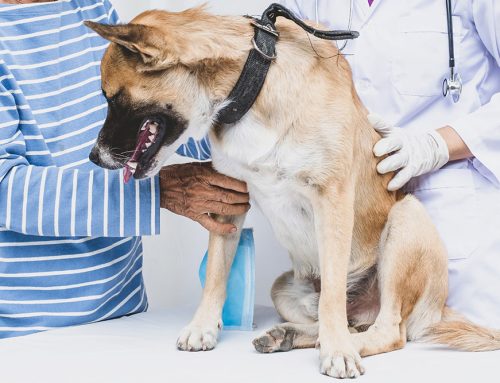Spaying female pets and neutering male pets reduces the risk of life-threatening reproductive cancers and can eliminate some undesirable behaviors. Spaying or neutering is also a responsible choice, because pet overpopulation and euthanasia in animal shelters are reduced. The Adamson Veterinary Services team outlines the benefits of elective sterilization procedures to help pet owners make informed decisions for their furry pals.
1. Spaying and neutering prevent reproductive cancers in pets
Spaying and neutering significantly reduce the risk of certain cancer types. Mammary cancer is common in dogs and cats and is often fatal, but spaying a female before her first or second heat cycle slashes this risk. Neutering male pets prevents testicular cancer and decreases the risk of prostate infections or enlargement.
2. Spaying prevents pyometra in female pets
Intact (i.e., unspayed) female pets can develop a life-threatening uterine infection called pyometra. Each heat cycle prepares the body for pregnancy by thickening the uterine lining, which continues to thicken in pets who do not become pregnant, gradually increasing their pyometra risk. Spaying eliminates the risk, which otherwise may require surgery and intensive care.
3. Spaying and neutering can increase your pet’s lifespan
A study analyzing aging patterns in male and female dogs found that gender didn’t affect lifespan. However, spayed and neutered dogs lived longer than their intact counterparts. They are less likely to be injured while seeking a mate or to develop reproductive cancers, degenerative diseases, and infections, leading to longer lives.
4. Neutering male pets can reduce roaming behaviors
Intact male pets frequently give in to their instincts to roam and find a female, especially if they can smell one nearby. This can lead to fights with other males or becoming lost or hit by a car. Neutering your male pet eliminates these urges and keeps them safe and sound at home.
5. Spaying and neutering can reduce spraying behaviors
Male and sometimes female pets may spray urine around the home to mark their territory. Male cats are the poster children for this behavior, which can make living with them difficult. Neutering can significantly reduce and often eliminate this behavior, especially if performed before your cat reaches sexual maturity.
6. Spaying and neutering may help your pet relax
Female pets can behave erratically during their heat cycles, becoming restless and vocal as they look for a male for mating. Although this cycle occurs only twice yearly for dogs, cats can cycle repeatedly, depending on environmental influences. Spaying females helps them feel consistently more relaxed and content at home with their families.
7. Spaying and neutering reduces unwanted pets in shelters
Millions of pets end up in shelters each year, and many are euthanized. Spaying or neutering your pet eliminates future puppy or kitten litters, alleviating overcrowding in local shelters and preventing abuse that unwanted litters often face. Reducing the pet population also helps animal shelters provide better care and services for the homeless or needy pets already in your community and increases their chance of finding a home.
When is the best time to spay or neuter your pet?

Research shows the best time to spay or neuter a cat is before 5 months of age. For dogs, the recommendation varies based on sex and expected adult size, as performing the surgery too early could increase the risk of some orthopedic issues and non-reproductive cancers. Female dogs benefit from spaying before their first or second heat cycle, while males are best neutered after they reach most of their expected adult size. Ask our team for specific recommendations for your circumstances.
Spaying or neutering your pet offers numerous health, behavioral, and societal benefits. These elective surgeries help prevent severe medical conditions, reduce unwanted behaviors, and reduce crowding in local shelters. Contact our Adamson Veterinary Services team to discuss the ideal timing for your pet’s spay or neuter surgery or to schedule a pre-surgical check-up.







Leave A Comment